What is a case study?
A case study is a detailed examination of a real-life situation that shows how a specific problem was solved. It walks readers through the challenges faced, the strategies used to tackle them, and the results that followed.
In marketing, for example, a case study highlights how a business applied its methods to achieve success, backed by data and results. It’s a great way to demonstrate expertise, build trust, and provide valuable lessons for others facing similar challenges. By breaking down the "what," "how," and "why," case studies make complex concepts easier to understand and learn from.
Here is a case study example to refer to.
Why should brands write a case study?
A good case study provides valuable insights and offers potential customers data-driven proof of the brand's ability to deliver results.

- Build credibility: A well-documented marketing case study demonstrates a brand’s ability to solve real-world problems through custom solution, making it easier for them to build trust with existing as well as potential clients or customers.
- Demonstrate positive outcomes: Case studies highlight successful strategies and provide concrete, data-driven evidence of effectiveness. By backing up marketing claims, they build trust and reassure potential clients that their investment will deliver valuable results.
- Attract new clients: By showcasing how they’ve helped others, brands can attract future customers who are facing similar challenges and are looking for proven solutions.
- Differentiate from competitors: A compelling case study showcases unique approaches and results that set the brand apart from competitors who may have demonstrated a different level of effectiveness.
- Offer learning opportunities: Beyond success, case studies often contain key lessons learned, offering the brand an opportunity to refine internal processes while also inspiring others to adopt best practices.
How to write a marketing case study
Writing a marketing case study doesn’t have to be complicated. Here’s a simple, step-by-step framework to guide you through the process:

1. Choose a success story
Pick a campaign or project where your marketing efforts delivered measurable results and focus on a situation that showcases a clear challenge and how you solved it.
2. Introduce the company
Briefly introduce the company or client involved and mention their industry and the key products or services they offer.
3. Define the problem statement
Clearly state the challenge the company faced or the specific goal they wanted to achieve.Examples: "Increase website traffic," "Boost brand awareness," "Improve customer retention."
4. Talk about how you solved the problem
Explain the marketing strategy implemented to address the challenge, including details such as the target audience, objectives, goals, and tactics. Provide a timeline of the strategy’s implementation, including key milestones and other notable considerations taken during execution.
5. Define results
Present the qualitative and quantitative results achieved through the implemented strategy. Include relevant metrics, statistics, and key performance indicators (KPIs).
6. Provide analysis and key insights
Reflect on what aspects were effective and the difficulties encountered. Also, share key insights or lessons learned that could benefit others in similar circumstances.
7. Gather testimonials
Add quotes or feedback from clients or customers who gained value from the campaign.
8. Add visuals
Add charts, graphs, or images to make the results more engaging and understandable as visuals help reinforce your key points.
By following this simple framework, you can create a clear and impactful marketing case study that tells a compelling story and shows the value of your work.
Here’s a marketing case study template that you can follow to create one for yourself.
| Case Study Title |
Choose a suitable title |
| Client or Company Profile/Introduction of company |
Overview of the company or brand being studied. |
| Challenge |
The specific problem or objective the company aimed to address. |
| Solution |
The marketing approach or campaign implemented to solve the challenge. |
| Outcomes |
The results will include revenue growth, shifts in key metrics, and any notable accomplishments achieved during the campaign. |
| Key insights |
Key insights and takeaways from the case. |
| Testimonials |
Include testimonials or feedback from clients or customers who benefited from the campaign. |
| Conclusion |
Provide a closing statement that wraps up the whole case study neatly. |
Examples of effective case studies by brands
- Mailmodo
Mailmodo, an email marketing platform renowned for simplifying interactive emails, strategically showcased the impact of AMP emails by highlighting client success stories. One notable example is foundit, a leading job portal in India, which successfully re-engaged 1.7 million job seekers and prompted them to update their incomplete profiles within six months using Mailmodo's solution.
Mailmodo collaborated with foundit to present this achievement as a case study across its platform and social media channels, serving as both a testament to Mailmodo's effectiveness and a source of inspiration for others in the recruitment sector. This initiative not only bolstered Mailmodo’s sign-ups and enhanced brand visibility but also provided a proven framework for addressing similar challenges within the industry.
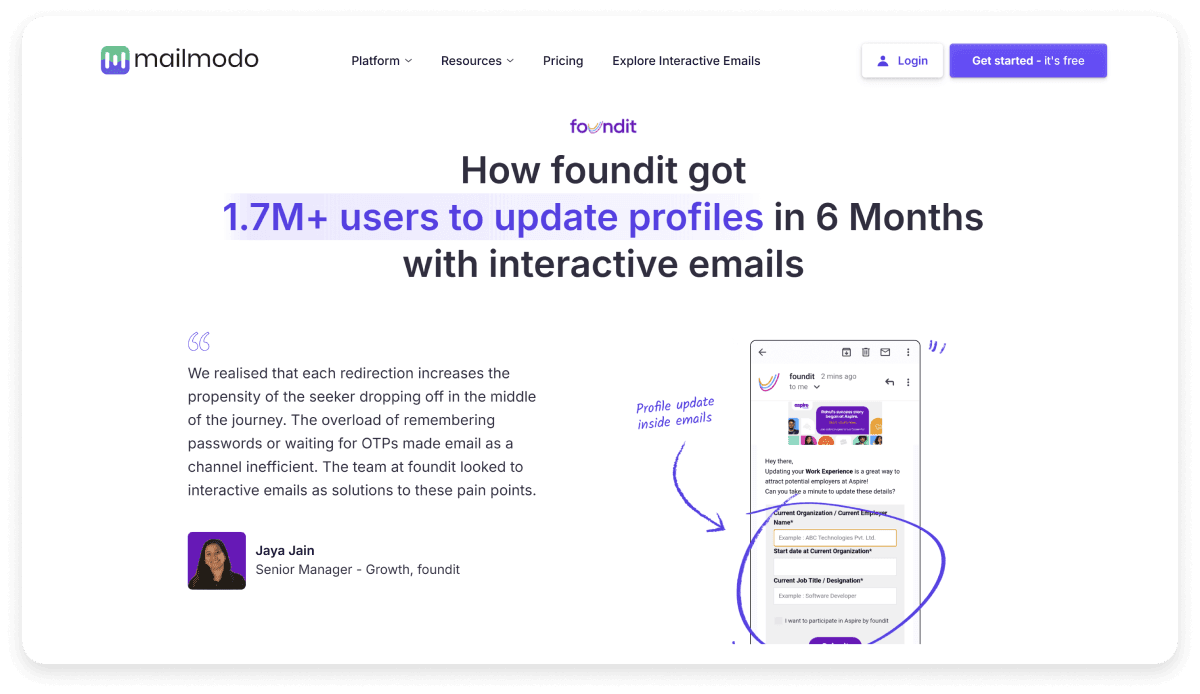
Read the full case study here.
Mailmodo’s CEO, Aquibur Rahman, even posted about it on Linkedin. Check out the post below.
- Dove's real beauty sketches
Dove's "Real Beauty Sketches" campaign set out to challenge societal beauty standards.
Using an emotional and thought-provoking video series, Dove ignited conversations and encouraged women to rethink their perceptions of beauty. The campaign garnered over 114 million views within the first month, sparked widespread discussion, and significantly boosted Dove’s brand sentiment globally.
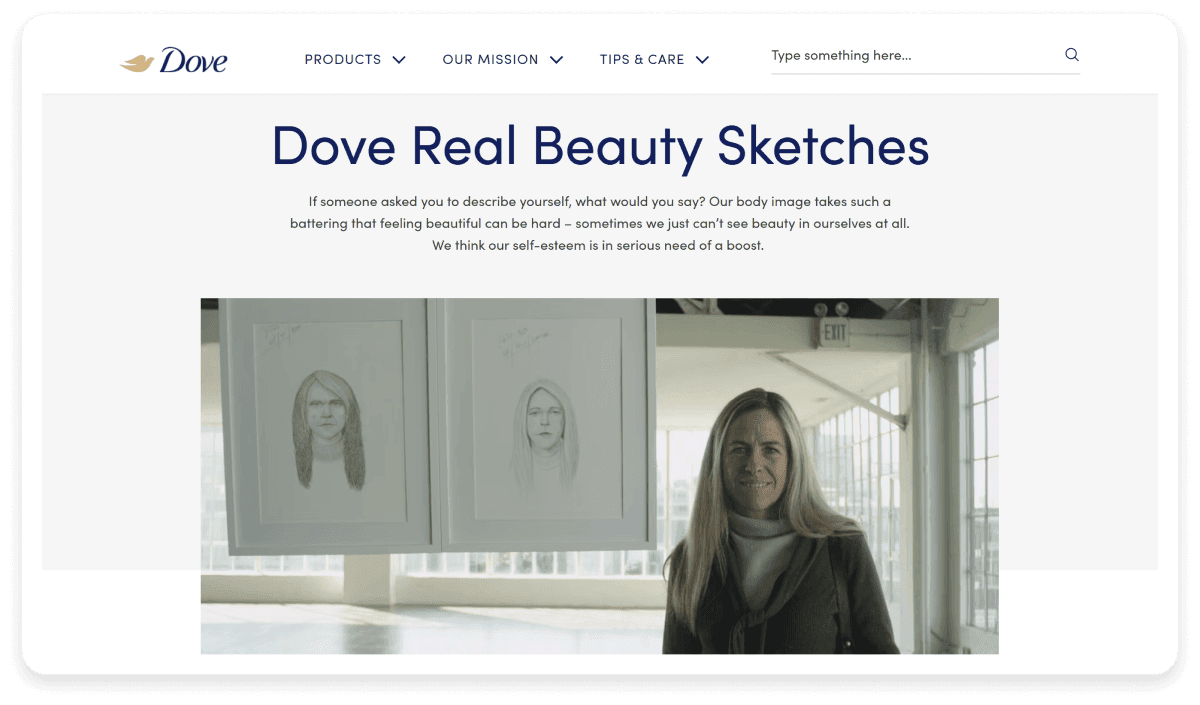
Read the full case study here.
- Slack
Slack has been vital in helping OpenAI streamline customer support and improve internal collaboration. By using Slack Connect, OpenAI shifted customer conversations into interactive channels, improving communication flow and enabling quicker responses. This integration allows team members to join discussions as needed, ensuring faster, more accurate solutions.
Internally, Slack’s tools like huddles and channels facilitate asynchronous collaboration across time zones, reducing the need for constant meetings. Custom emojis help provide quick feedback and status updates, adding a layer of efficiency and fun.
With strong security features and automation tools, Slack has allowed OpenAI to scale operations while maintaining productivity and data protection.
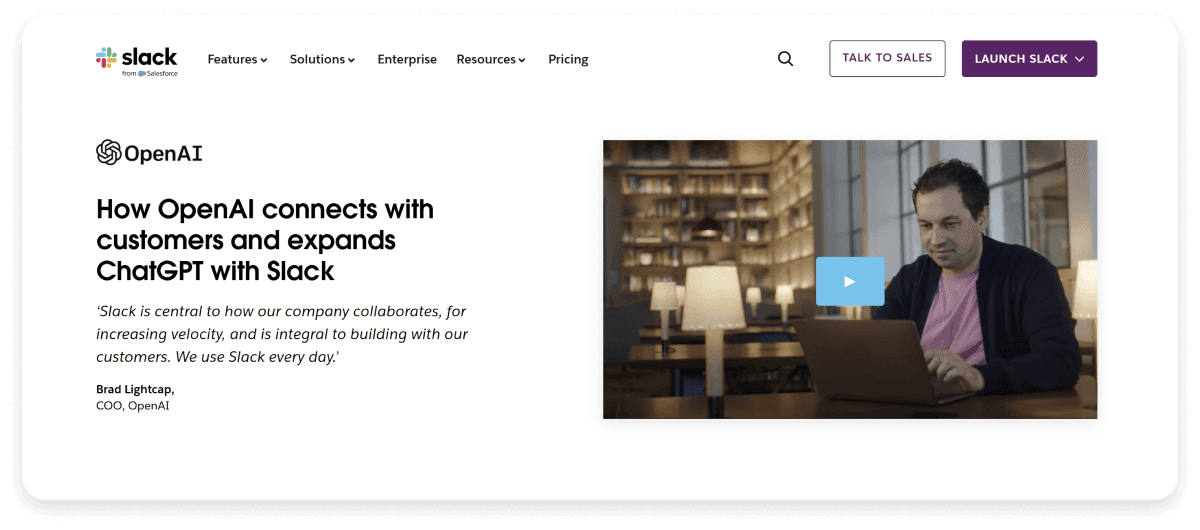
Read the full case study here.
- Bloomreach
Benefit Cosmetics successfully utilized Bloomreach Engagement to power its "Blush Launch" omnichannel campaign. Bloomreach's platform enabled Benefit to segment its audience into targeted groups, such as previous buyers, VIPs, and waitlist sign-ups, allowing for personalized communication strategies.
Through Bloomreach's real-time segmentation, Benefit achieved an impressive 10.1% average click-through rate on pre-launch emails. The campaign was divided into pre-launch, launch, and post-launch phases, each aimed to raise awareness, recruit new customers, and drive sales.
Additionally, Bloomreach's analytics tools provided Benefit with real-time insights, helping optimize the campaign's performance. As a result, Benefit saw a 50% higher click-through rate and 40% more revenue from the Blush Launch emails compared to similar campaigns that year.
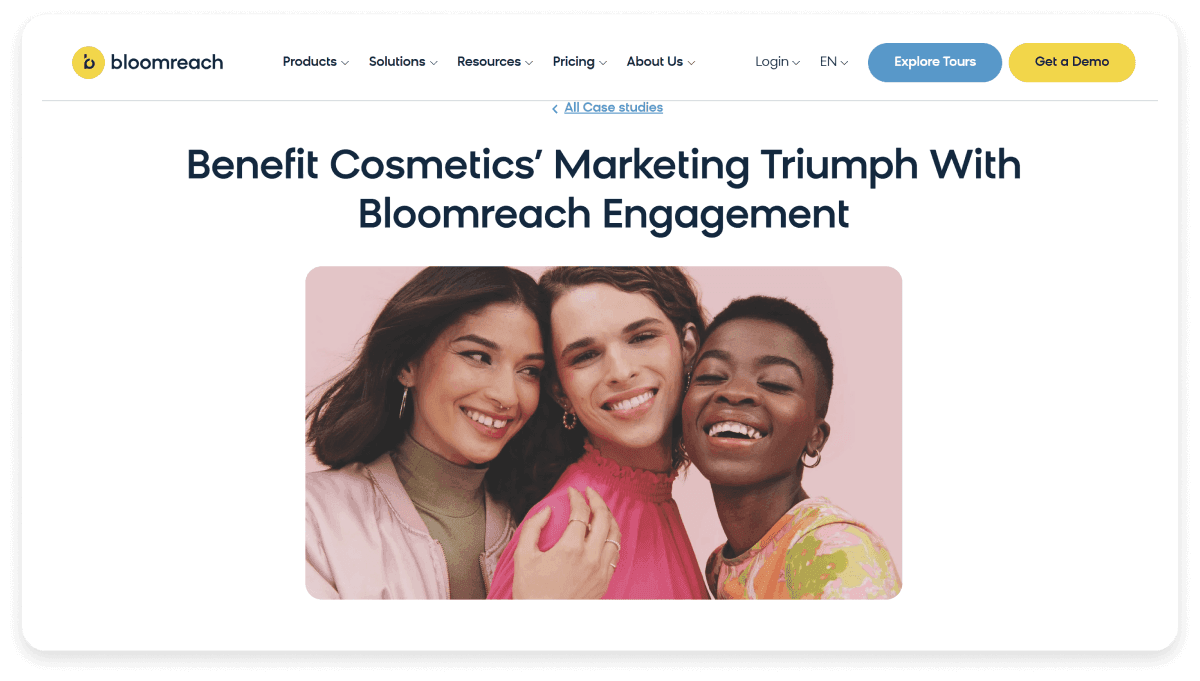
Read the full case study here.
- Hubspot
A moving services startup, Handled, scaled from zero to 121 locations using HubSpot’s CRM. The company automated workflows to enhance customer service and marketing efforts, which helped them grow rapidly while providing personalized customer experiences.
This approach coupled with HubSpot’s consulting services, enabled Handled to scale quickly and meet increased demand during the COVID-19 pandemic, especially with younger, digital-first consumers.
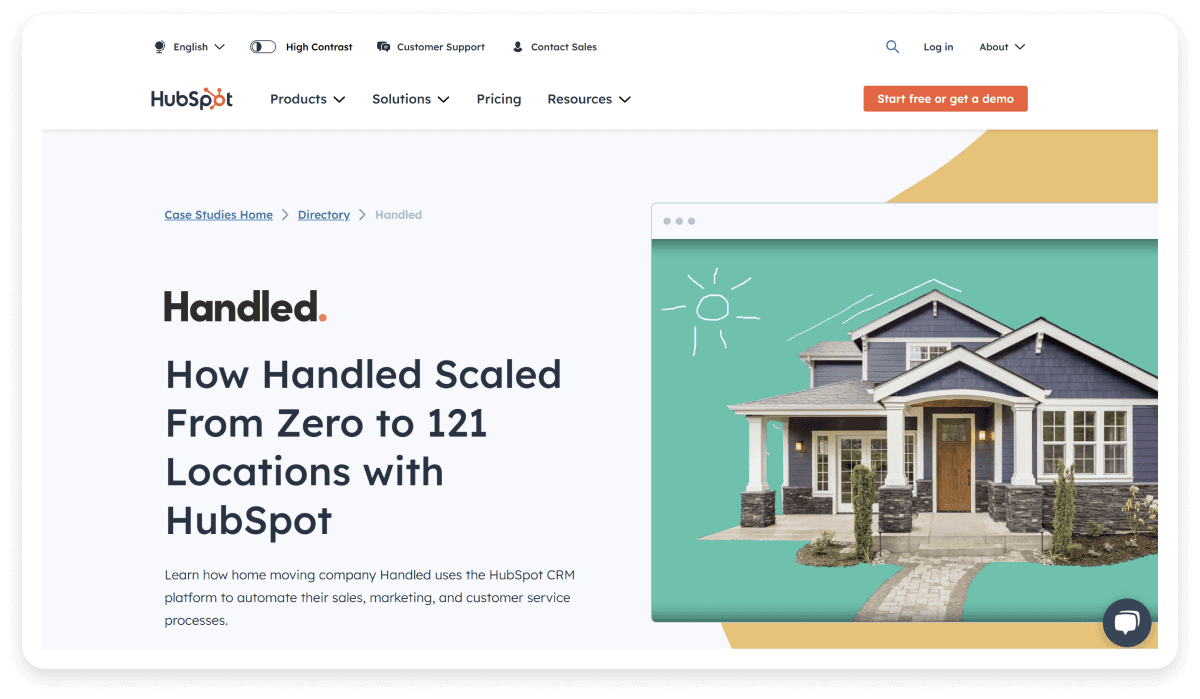
Read the full case study here.
Conclusion
Marketing case studies serve as compelling narratives highlighting a brand’s successes while building trust with potential clients using customer success stories. By using the provided framework and learning from examples like Mailmodo and Dove, brands can effectively share their unique challenges and solutions. A well-crafted case study showcases achievements, inspires others and enhances a brand’s reputation.



































